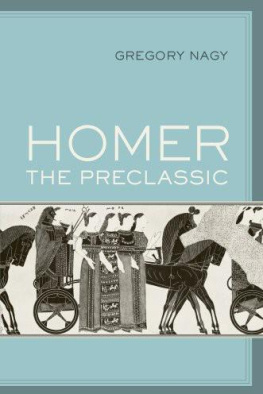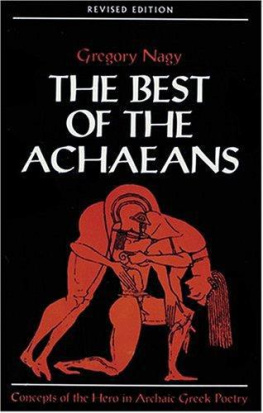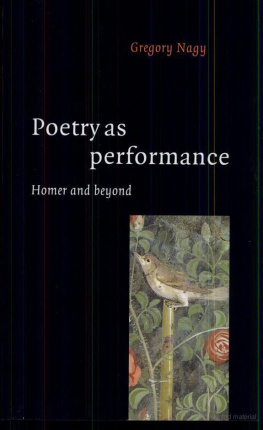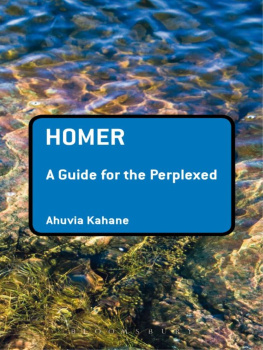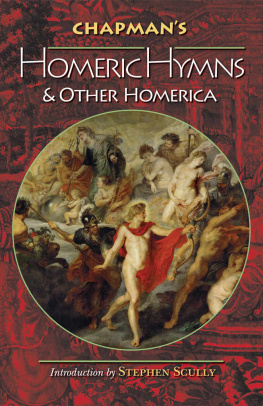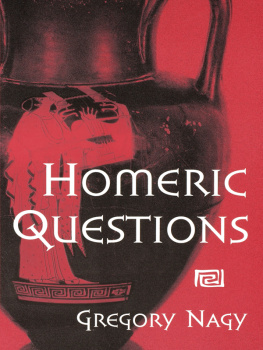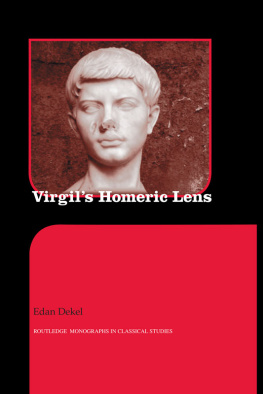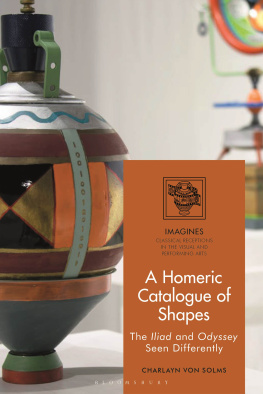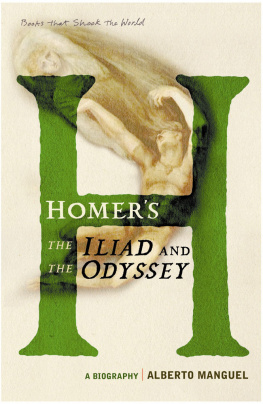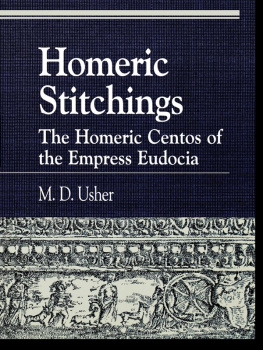Preface
There are two different publication dates for this book: 2009 for the published online version that was born digital on the website of the Center for Hellenic Studies, and 2010 for the published version as printed by the University of California Press. (The online version contains updated annotations stemming from 2010 and thereafter. These annotations track relevant new debates or discoveries. At II7 of the online version, for example, corresponding to p. 134 of the printed version, there is an annotation dated 2010.12.17 referring to a new debate on the historical value of myths about the so-called Aeolian Migration.)
There are many people I want to thank for helping me - so many that I am unable to list them all by name. In general, I express my appreciation to the academic community of the Department of Classics at the University of California in Berkeley, who hosted me as the Sather Professor when I gave my six Sather Classical Lectures in the spring semester of 2002. In particular, I thank Elizabeth Baughan, Andrew Garrett, Crawford Greenewalt, Mark Griffith, Erich Gruen, Alexander Herda, Robert Knapp, Leslie Kurke, Patricia Larash, Anthony Long, Donald Mastronarde, Stephen Miller, Charles Murgia, Ellen Oliensis, Paul Psoinos, Alain Renoir, Laura Steele, Andrew Stewart. I take this opportunity to thank also all my other colleagues and friends. Six names stand out: Christopher Dadian, Soo-Young Kim, Leonard Muellner, Anita Nikkanen, Jill Curry Robbins, and Noel Spencer. My debt to these six is beyond measure.
Finally, I thank Paul Psoinos for his peerless copy editing, Yue Joy Deng and Jeffrey P. Emanuel for their acute proofreading, and Valerie Woelfel for her perceptive line drawings.
Introduction
Introduction 1 This book Homer the Preclassic, which is based on the Sather Classical Lectures of spring 2002, covers the preclassical era of Homeric reception. It is complemented by a twin book, Homer the Classic (2009), which covers the classical era. Between the two of them, Homer the Classic and Homer the Preclassic cover six ages of Homeric reception. Here are the six ages, arranged in a sequence going backward in time:
HC ch. 1. Homer the Classic in the age of Virgil
HC ch. 2. Homer the Classic in the age of Callimachus
HC ch. 3. Homer the Classic in the age of Plato
HC ch. 4. Homer the Classic in the age of Pheidias
HPC Part I. A Preclassical Homer from the Dark Age
HPC Part II. A Preclassical Homer from the Bronze Age.
Introduction 2 The idea of viewing Homer through several different time frames is consistent with my overall approach to Homer, which goes beyond current debates concerning Homeric orality or literacy. [ Such a primordial Homer, whether or not his name was Homer, was some kind of primitive; if he was a genius, he was a primitive genius.
Introduction 3 By contrast, the Homer of Homer the Classic and Homer the Preclassic is more than just a hypothetical person. He is a historical concept. As a concept, Homer is a metonym for the text and the language attributed to Homer in historical times. By metonym I mean an expression of meaning by way of connecting something to something else, to be contrasted with metaphor, which I define for the moment as an expression of meaning by way of substituting something for something else. [
Footnotes
] HR 1-3. For a survey of the relevant debates, see de Vet 2005; at her p. 268n37, she could have made fuller reference to the important work of Lamberterie 1997 / 2001.
] For an overall critique of such ideas, see Graziosi 2002:90-93.
] HTL xi.
Chapter Seven: Conflicting Claims on Homer
II 71. The tomb of Achilles and the topography of the Troad
II42 The Aeolians had their own motives for claiming the territory of Sigeion as their very own Iliadic space. The tomb of the hero Achilles was understood to be located in Aeolian territory, specifically in the environs of Sigeion. As we are about to see, the Aeolians connected this poetic territory, this Iliadic space, with epic references to the tomb of Achilles. And so too did the Athenians. Such conflicting claims on Iliadic space stemmed from conflicting claims on Homer himself.
II43 In order to make this argument, I need to start by returning to two points I stressed earlier:
The city of Mytilene in Lesbos was supposedly representing all Aeolic-speaking Hellenes when it claimed the Iliadic territory of Aeolian Sigeion.The motive of the Athenians in counterclaiming for themselves the territory of Sigeion was predicated on this previous claim of the Mytilenaeans.
II44 So far, I have noted that the territory of Sigeion was understood to be the site of the tomb of Achilles. But there is more to it. Achilles was worshipped as a cult hero at this tomb. Both the tomb and the hero cult of Achilles in the vicinity of Sigeion in the Troad had been for the Aeolians a metonymy for the Iliad - that is, for their epic tradition about the Trojan War. The objective of the Athenians was to appropriate for themselves a comparable metonymy.
II45 There is a plethora of external evidence about the status of Achilles as a cult hero. [ Nearby is a tumulus looking out over the sea. As we will see, it was claimed that this tumulus was the tomb of Achilles.
II46 There was also a rival claim, however. It centered on a tumulus situated some ten kilometers to the north, on the slopes stretching from the heights of the promontory at the northern end of the Sigeion Ridge, in the immediate vicinity of the old city of Sigeion. [
II47 As we learn from the stylized account of Philostratus in the Heroikos (52.3-54.1), the tomb of Achilles in the Troad was the site of seasonally recurring sacrifices offered to the hero. These sacrifices were performed by Aeolians. To be more specific, these Aeolians were Thessalians, that is, Aeolians originating from - and still living in - the territory on the Helladic mainland where the Iliadic hero Achilles himself was reputedly born and raised. So these Aeolians could claim a special connection to the territory on the Asiatic mainland where Achilles died and was buried. Such a claim is relevant to the imperial interests of Athens in the era of the Peisistratidai. We know that one of the sons of Peisistratos, Hegesistratos, was renamed Thessalos (in the Attic dialect, Thettalos) the Thessalian (Aristotle Constitution of the Athenians 17.3-4), and we also know that this son was directly associated with Sigeion: after that city reverted to the Athenians, he was put in charge as tyrant of the city (Herodotus 5.94.1). [
II48 How, then, is such a Thessalian connection relevant to the imperial interests of the Athenians? These Aeolians on the Helladic mainland were the notional prototypes of the Aeolians on the island of Lesbos and, by extension, of the Aeolians on the Asiatic mainland. Thessaly was understood to be the point of origin for the Aeolian Migration, that is, for the colonization of the Aeolian cities on the island of Lesbos and, by extension, of the Aeolian cities on the Asiatic mainland. While the Athenians on the Helladic mainland figured themselves as the prototypes of the Ionians of Asia Minor and of its outlying islands, they figured the Thessalians as the prototypes of the Aeolians of Asia Minor and of its outlying islands, especially of Lesbos.
II49 What I have just formulated can be reconciled with two references in the Iliad to a most singular event: the capture of all Lesbos by a single hero, Achilles of Thessaly (IX 128-131, 270-273). [ I propose that the story of this capture was a charter myth that accounted for the early appropriation of Lesbos by the Thessalians and for a much later attempt at reappropriation in the specific context of their alliance with the Athenians. In terms of such a charter myth, as I will now argue, the tomb of Achilles could be located not only at the site of

